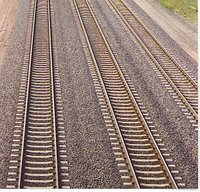AREMA to Students: Don't Bother!
AREMA (American Railway Engineering and Maintenance of Way Association) is sending mixed messages. Help me figure out which is the message I should believe.
First Message: Last September, at the Annual Technical Conference in Chicago, AREMA honored several college students for their work done in Railroad Engineering.
Second Message: A recent check of upcoming AREMA Seminars reveals that Registration Fees are quite high. For example, a one-half day seminar on Roadway Worker Safety is priced at $449. A two day seminar on Practical Railway Engineering is $625. A Concrete Tie Seminar is $500 for a day and a half. And, a one day AC Power Conference carries a registration fee of an astounding $575! I say astounding, because I'm comparing that fee of $575 with the recently completed TTCI Research Review, which included one day of presentations from various experts, a one-half day track walk of the FAST Facility including bus transportation, two lunches, one dinner, and a DVD containing all material from all presentations. TTCI's fee: $400!
I'm looking at this and realizing that there is no Student Discount for these AREMA Seminars! I am also recalling that the number of students in Chicago was pretty low.
My conclusion, therefore, is that AREMA could care less about Student Participation in their activities. The second message is the believable one, and those AREMA Members who are far sighted enough to realize that every opportunity should be given to encourage student participation in Railroad Engineering ought to be concerned.
Some of AREMA's predecessors, such as the American Railway Engineering Association and the Roadmasters and Maintenance of Way Association, made the sharing of railway engineering information a priority. If AREMA has lowered that priority to some level below making money, we've got a problem.
Especially when it comes at this critical time when Engineering Students must be encouraged to consider a career with the Railroads. AREMA, you need to change your message to a consistent "Students, we encouage you and value your participation".
***
Previous:
Where Are the Railroad Track Engineers Going?


